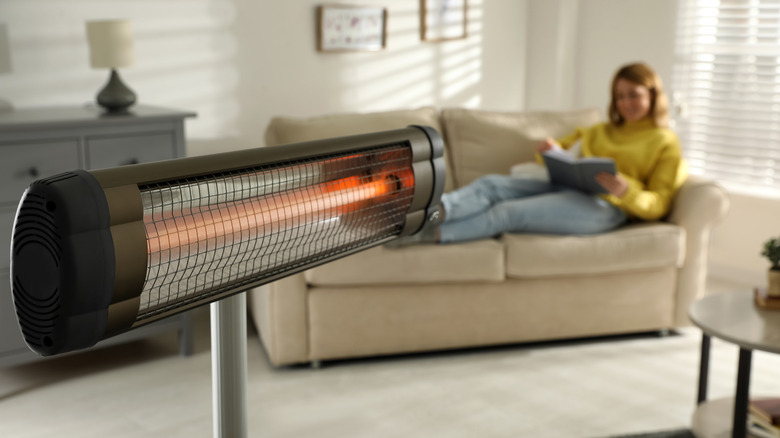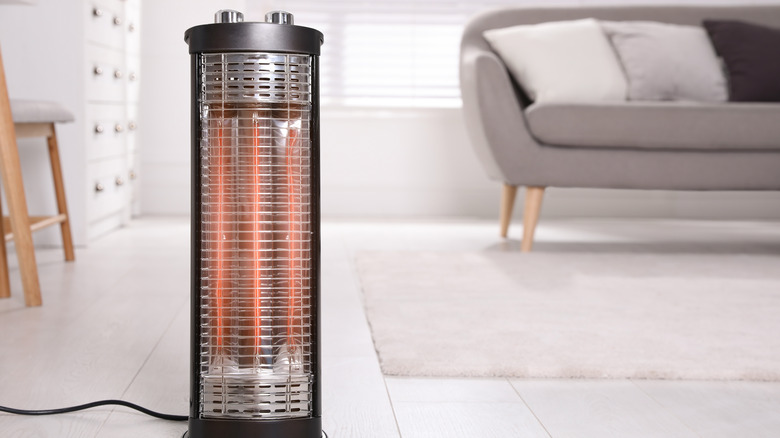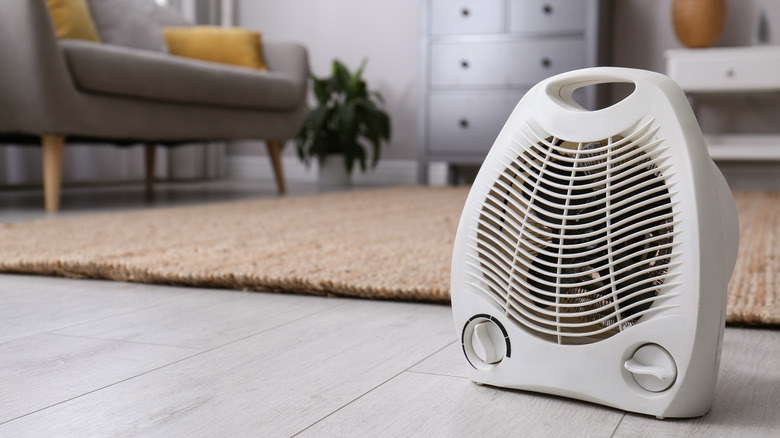Infrared Vs. Traditional Heaters: Which Option Is Better?
When the chilly season is on the horizon it's time to start thinking of all the ways you can keep yourself toasty. Stocking up on sweaters, plush throw blankets, and extra pairs of thick socks is always a good idea, but you may also want to invest in a handy space heater. When used safely and properly, small space heaters can be highly effective for keeping a room warm. If you don't have a working heating unit for your entire home, or if you're looking only to heat one room at a time, then this option may be just right for you.
In certain circumstances, space heaters can be a good way to save on your electric bill as they generally use less power, according to the U.S. Department of Energy. When searching for a unit for your home you'll come across a wide variety of traditional heaters as well as those that utilize infrared technology. Traditional heaters can be powered by either propane or by electricity when plugged into a wall socket; they use either convection or radiant heating. Convection heating uses a fan in the unit to bring in cool air and pull it past the heating coils which warm up the air before circulating it throughout the room, explains Newair. Infrared heaters work by emitting heat that is then absorbed by the objects around it.
Pros and cons of infrared heaters
From electrical cord power sources to propane fuel to natural gas, you can select which infrared option best suits your needs. Although they're not meant to heat up your entire home, infrared heaters can be an ideal solution to keep a particular area comfortable so as to not waste money and energy heating unoccupied space, according to How Stuff Works. These heaters also use less energy than most other heating bases and can be more environmentally friendly, depending on the type of power source that is fueling your unit. Because objects in the range of the infrared light will absorb the heat, much like being warmed by the sun, infrared heaters don't need a fan to push heated air to the corners of an area. This makes it a quieter solution to fan-based units.
There are a few cons regarding infrared heaters. Older units may be extremely hot to the touch, which can be concerning if you have pets or small children. Because of their radiant heat capabilities, infrared heaters only warm those that are in a direct path of the unit. So if you're looking to keep a large group of people in one room extra cozy, it may not be the best option for you. Also, because it doesn't heat up the air in the room, only objects in its path, once the unit is turned off, the heat will immediately dissipate, as per Newair.
Pros and cons of traditional heaters
Generally speaking, traditional space heaters are powered by batteries or a cord that gets plugged into your wall socket. In some cases, you may see units fueled by propane as well. These heaters are more environmentally friendly than some other options because they can warm up a room without emitting any harmful by-products you might get from fumes, gases, or burning elements, according to Home Air Guides. Relatively easy to find at an affordable price, traditional space heaters are also designed with safety in mind. However, you should absolutely be careful never to leave a unit running when you're asleep or if no one is in the room. Look for products that come with an automatic shut-off for when they're accidentally knocked over; this additional safety feature could prevent a serious fire.
Some negatives with regard to electric space heating units are that, because they run on electrical power, if there's ever an outage then you cannot rely on them to keep you warm. Also, these appliances may take a longer time to heat up an entire room as they must go through the process of warming the air and having a fan blow it around. These fans can be quite noisy, depending on the type of unit, and may prove to be distracting or annoying.


